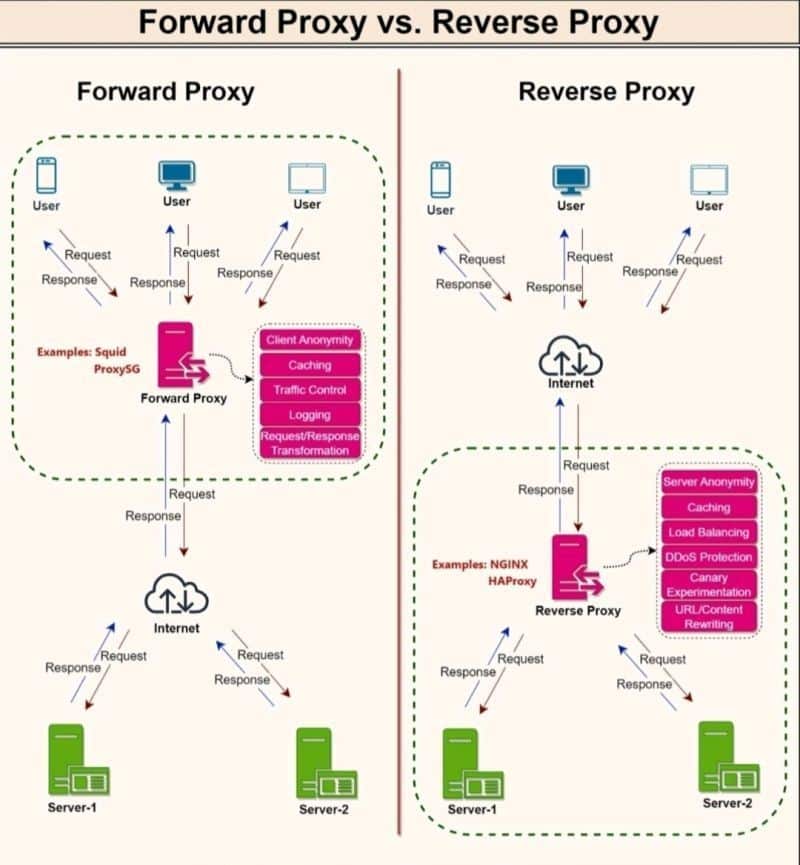Despite their shared name, forward and reverse proxies couldn’t be more different in terms of their purpose, their implementation and the role they play in enterprise architectures.
The key difference between a reverse proxy and a forward proxy is that a forward proxy enables computers isolated on a private network to connect to the public internet, while a reverse proxy enables computers on the internet to access a private subnet.

Forward Proxy
A forward proxy, also known as a “proxy server,” or simply “proxy,” is a server that sits in front of one or more client machines and acts as an intermediary between the clients and the internet. When a client machine makes a request to a resource on the internet, the request is first sent to the forward proxy. The forward proxy then forwards the request to the internet on behalf of the client machine and returns the response to the client machine.
A forward proxy is mostly used for:
- Improving privacy and security by hiding the real IP address and location of the client making the request.
- Accessing content that is restricted by network policies, such as geoblocking or content filtering.
- Caching frequently requested content to improve performance and reduce bandwidth usage.
- Enabling anonymous browsing and preventing tracking of online activity.
- Managing and controlling access to the internet by restricting or blocking certain types of content or websites.
- Enforcing security policies by scanning and filtering incoming traffic for malicious content or viruses.
- Providing bandwidth optimization and compression for slow or unreliable network connections.
Reverse Proxy
A reverse proxy is a server that sits in front of one or more web servers and acts as an intermediary between the web servers and the Internet. When a client makes a request to a resource on the internet, the request is first sent to the reverse proxy. The reverse proxy then forwards the request to one of the web servers, which returns the response to the reverse proxy. The reverse proxy then returns the response to the client.
A reverse proxy is mostly used for:
- Load balancing and distributing incoming traffic across multiple servers or backend services.
- Caching frequently requested content to reduce server load and improve performance.
- Security and protection of backend servers by filtering and blocking malicious traffic or unauthorized access attempts.
- Providing SSL/TLS termination to offload the encryption/decryption processing from backend servers.
- Enabling content-based routing and redirection based on the requested URL, domain, or headers.
- Serving as a single point of entry and authentication for multiple backend applications or services.
- Simplifying the configuration and management of backend servers by abstracting them behind a single hostname or IP address.

